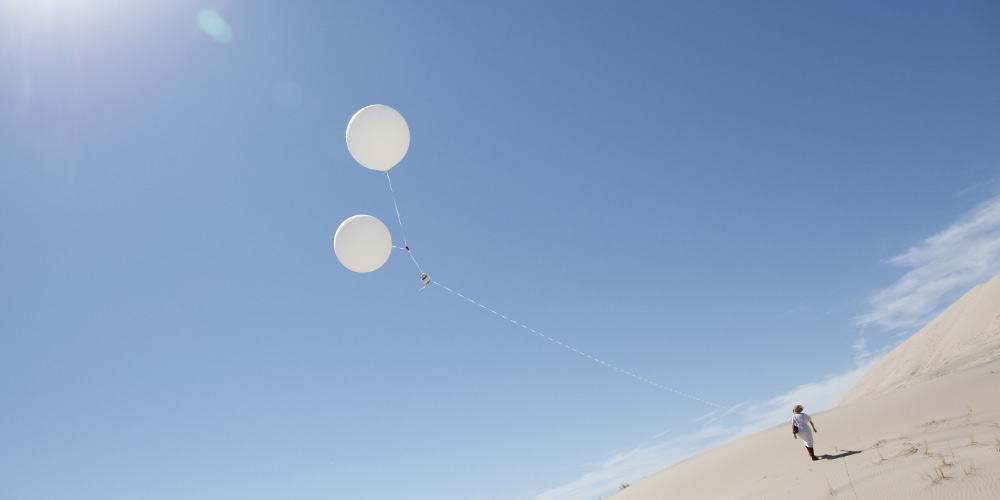
Credit: Pinar Yoldas
University of California, Los Angeles (US)
UCLA Art | Sci Center & voidLab, Department of Design Media Arts
“Everything in nature is about BALANCE and DIVERSITY. In turn everything that is happening in our society and the environment is a direct reflection of our world being out of balance. When you have a group of men deciding what a woman’s right is in relation to her body, you know that chances are high that they would be equally inconsiderate of the Earth we all live in.”
(UCLA Making a Guest Appearance at Ars Electronica Festival, Ars Electronica blog)
Gender and environmental advocacies are stronger than ever, as is the opposing conservatism strengthened by the fear of the unknown and the need to go back to the past. Binary mindsets have to give way to a more complex, diverse and fluid world-views. Thus we come together to conceptualize this campus exhibition as professor and founder of the Art Sci center and recent graduate of Design Media Arts and co-founder of voidLab.
With the selected works, we aim to converge the issues in feminism with environmentalism. By framing the exhibition in this way, it is our hope to reinvigorate the eco-feminism that emerged in the 70s and was ignored for much too long. In this particular context, at the Ars Electronica festival in Linz, we address the local and transnational issues of feminism in media arts and the global issue of climate change—thus the very obvious title.
The climate change movement is not gender neutral—globally, females constitute two-thirds of the world’s poor and their livelihoods are more dependent on the natural resources threatened by climate change. Females and males living in rural areas within developing countries face the greatest challenges in securing water, food and fuel. When relating gender to climate change, we avoid focusing only on binary male-female inequalities but also scrutinize discursive constructions that shape power relations. Ultimately, climate change cannot be solved with a nationalistic mindset—this is a global problem—air and water have no borders.
It would be difficult to present the works of the department alone, as this would negate the dynamic network that has emerged since year 2000 when the UCLA Department of Design was reimagined as Design Media Arts. Very quickly it branched out into auxiliary research labs and centers based on faculty research—enabling students and the faculty to work collaboratively across disciplinary and institutional boundaries. In addition to presenting UCLA Design Media Arts alumni who are now active artists and teachers, it was also very important for us to present women scientists who also collaborate with artists, as gender issues in sciences are much deeper and problematic than those the art world faces and we want to honor and support the brave young scientists working with environmental issues. To this end we present Art Sci center alumnae: Christina Agapakis, a postdoc in molecular, cell, and developmental biology at UCLA (2012-14), now working in a Biotech company, Olivia Osborne, postdoc in the UC Center for Environmental Implications of Nanotechnology, and Rita Blaik, recent PhD graduate in material science, now the education coordinator at the UCLA CNSI.
Finally, we did not shy away from including those who are still students—current Design Media Arts students and voidLab co-founders Jen Agosta and Sarah Brady and recent graduate Sanglim Han collaborate with scholars to examine the urgent issues of gender and racial profiling in artificial intelligence; DMA MFA alumna Noa P. Kaplan, who exhibited at the Art Sci gallery and always enthusiastically followed and participated in the center events, is currently pursuing PhD degree at USC. Art Sci center alumna Mary Maggic Tsang recently graduated from MIT Media lab and is participating with Byron Rich in Ars Electronica this year, so the star is really shining on her estrogen workshops!
Climate Change is certainly a feminist issue but also very much a generational issue—it is these young artists and teachers who hold the key and we celebrate their brave work in these troubling times.
Disclaimer: our curatorial approach may not reflect the views of the UCLA School of the Arts or the Department of Design Media Arts. No doubt every faculty in the department would frame this exhibition in their own way, and we suspect that many of our colleagues would agree and support our curatorial decisions.
Carboniferous
Pinar Yoldas (TR)
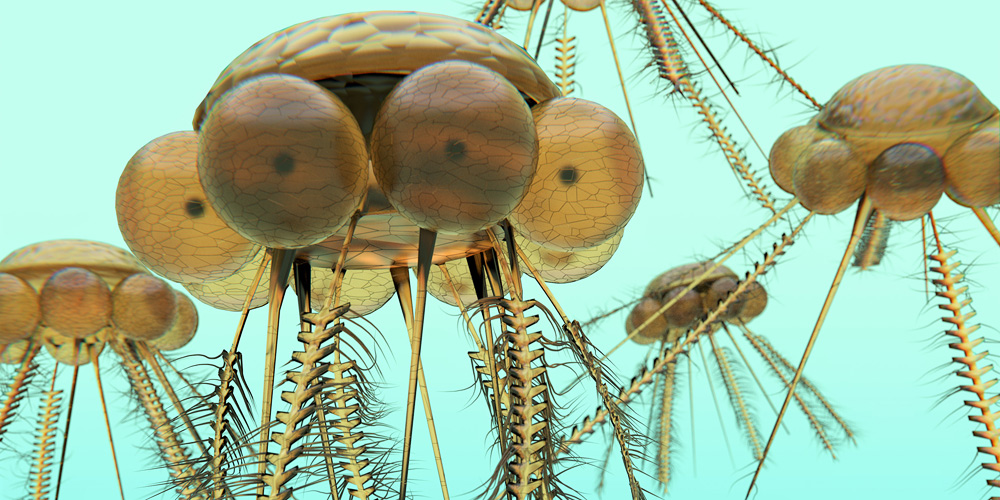
The connection between fossil fuels and plastics makes fossil fuels an immensely interesting subject to think about if one intends to understand two of the biggest problems of planetary health: CO2 emissions and plastics. Whereas CO2 emissions lead a large family of carbon-dioxide-related, issues global warming, acidification of the oceans, air pollution being the gravest issues, plastic pollution poses another type of threat to global ecosystems by entering the food chain as food and predator at the same time. In Carboniferous I intend to connect the dots between fossil fuel and the ancient history of plants, paleobotany and problems caused by fossil fuels.
Panta Rei (Everything Flows)
Silvia Rigon (IT)
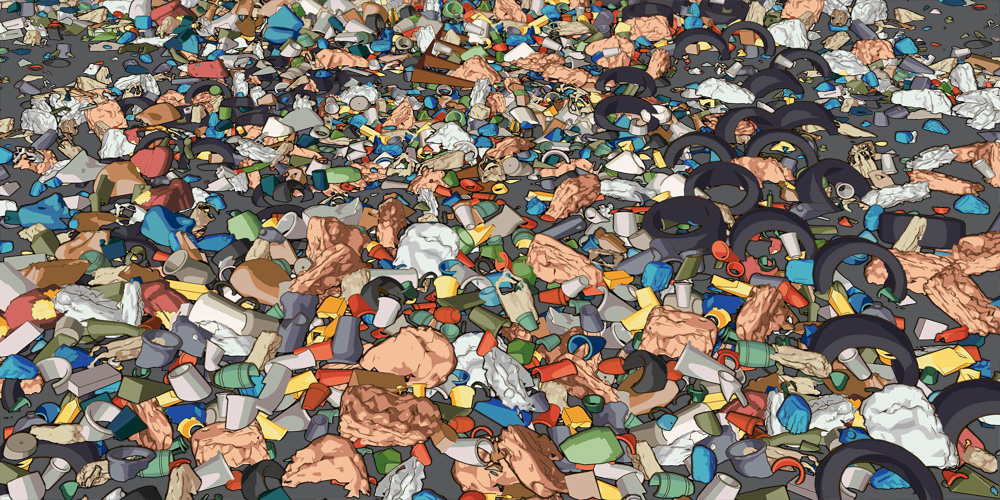
A stream of colors. An endless amount of trash flowing towards the viewer in perpetual motion. As time swirls entangled in the looping of the animation, a cartoonish and colorful aesthetic suspends the gaze in a contemplative fixation. One more time we find ourselves suspended in our ambivalence towards the culture of excess.
Water as a medium of communication is the movement that brings what was underneath to the surface, and carries it with it. The river is then a metaphor of passage, a course that can bridge two worlds, a transmitter. It can carry you to the other side but can’t take you back. It has often been referred to as a metaphor of time. “You cannot step into the same river twice,” said Heraclitus. In Dante’s Divina Commedia, the river Acheron provides a passage to the souls of the dead, the final route into the underworld.
Inspired by real media news events, Panta Rei is a socio-political commentary on media-induced anesthetization, but also a metaphor of the passage we are facing epochally, with water at the center of the struggle for sustainability, survival and the choices we make or don’t make.
Extreme Environments: Arts-Based Field Research
Scott Hessels (US)

Extreme Environments is an experimental arts education initiative based in Hong Kong that places art and design students in remote scientific field stations to collect data alongside scientific and environmental organizations dedicated to the protection of these important ecosystems. The students return to use the unique tools of the School of Creative Media to interpret and present their discoveries in new forms. Data is not just visualized but transformed creatively into games, interactive artworks, cinema, animations and more to help engage with wider audiences.
The first Extreme Environments expedition and exhibition, in 2012, was a partnership with UCLA’s Art | Sci Center with direct input from the California Nanosystems Institute (CNSI). The Extreme Environments program is now one of the most respected discovery-based education initiatives in the world, discussed in top international journals, news media and conferences.
Since 2012, art and design students have visited scientific field-research sites in some of the planet’s most remote corners, including the Mojave Desert, Antarctica, recently discovered caves in Vietnam, underwater in the rich reefs of Sipidan, Malaysia and in the Arnavon Islands, a remote western region of the Solomon Islands greatly endangered by rising ocean levels.
The Desert Metropolis: the Mojave Desert (2012); Freeze Frame: Antarctica (2014); Fade to Black: the Vietnam caves; Deep Focus (2015): the Coral Triangle (2017).
Molecular Queering
Mary Maggic Tsang (US), Byron Rich (CA)
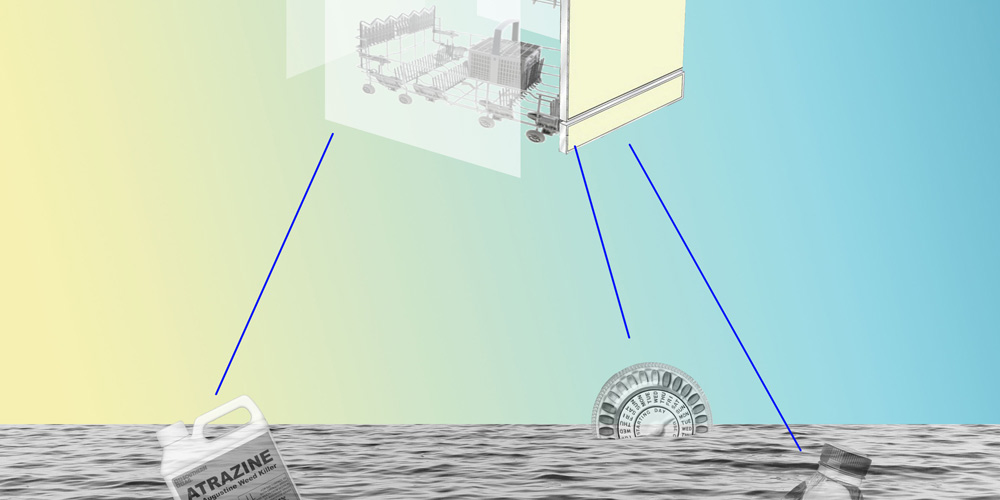
Bodies queer in many ways, most actively through the molecular colonization of our planet. Thanks to petrochemical, agricultural and pharmaceutical industries (markers of our anthropogenic time), these queering molecules are hormonally active and bio-politically pervasive as a state of toxicity. Our bodies and bodies of non-human species are all undergoing a collective mutagenesis—our kin are both the intersex frogs as well as the gender-bending chemicals in their bloodstream. So what does it mean to identify with our chemically induced world? To create discourse that turns toxic shame into toxic embrace? Am I not only inheriting the genomes of my parents but also the plastic molecules my mother is exposed to as I incubate in her womb? It is with this queering power of xeno-bio-chemicals that the Molecular Queering workshop performs a urine hormone extraction and analysis, a DIY/DIWO recipe for gender-hacking. Bring your own urine!
Financial Support: Allegheny College
Special thanks to The Aliens in Green
Shadow Glass
voidLab: Jen Agosta (US), Sanglim Han (KR), Xin Xin (US/TW)
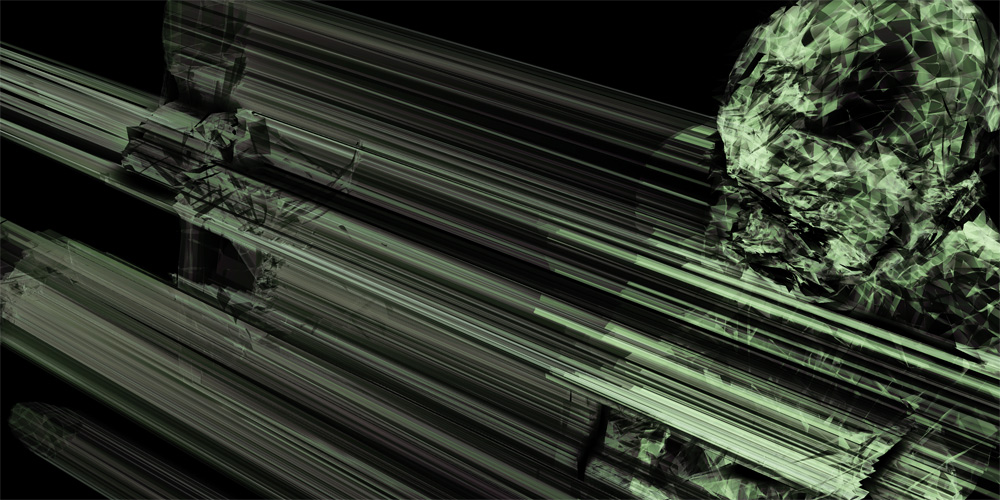
Shadow Glass is a voidLab collaboration between Jen Agosta, Sanglim Han, and Xin Xin based on an interview with Safiya Umoja Noble, the author of Algorithms of Oppression: How Search Engines Reinforce Racism (forthcoming, NYU Press). In the book Noble coins the term “technological redlining,” describing the historical redlining that gets carried over into the creation of algorithms. Noble challenges us to think about how the design of algorithms and databases intersects with issues of race, gender and class, and urges designers and policy-makers to confront and eliminate biases in the development of decision-making technologies. Shadow Glass echoes Noble’s perspective of artificial intelligence as a human rights concern.
Interviewer: Xin Xin
Visual artist: Sanglim Han
Sound artist / music producer: Jen Agosta
Shapeshifting AI
voidLab: Nora Khan (US), Sarah Brady (US), Sanglim Han (KR), Jen Agosta (US)
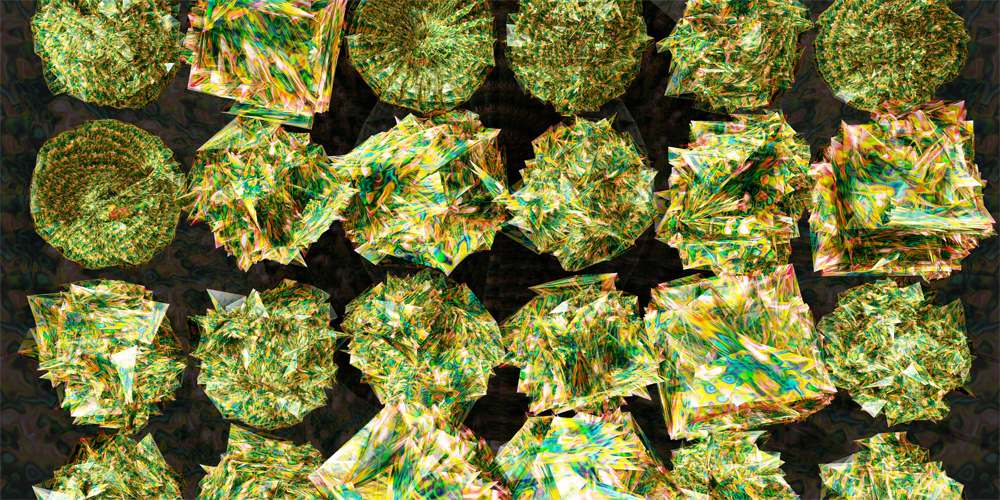
Shapeshifting AI is an audio-visual installation about artificial intelligence and its capacity to develop language for the unknown as rich poetic devices using AI as a tool to produce new forms of symbolic language expressed in radically new forms. As women of color, Kahn and Brady share ideas on imaginative paradigm shifts created outside a white, patriarchal, capitalist and colonialist world where a power imbalance between those of “otherness” and those without still exists. Is it possible to come up with solutions that are not human-centric and have a post-human capacity to turn alienation into expressions of power? Khan and Brady explore this question in a recorded interview with a musical remix by Jen Agosta and visual accompaniment by Sanglim Han.
Interviewer: Sarah Brady
Visual artist: Sanglim Han
Sound artist / music producer: Jen Agosta
In Passing
A.M. Darke (US)
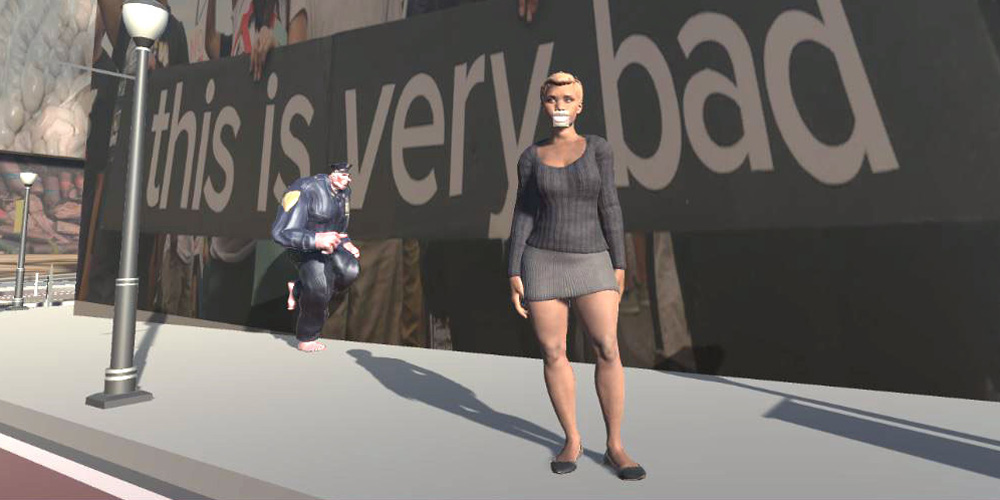
In Passing is a virtual reality experience about what it is like to navigate public space based on one’s intersecting identities. The work presents a diverse group of people, each recorded while describing their unique experience moving through the world. Viewers navigate virtual streets where such recordings have been superimposed onto virtual proxies, creating a tension between constructed reality and raw personal account.
In a time when social division is running high, sometimes the best thing we can do is take time away to listen. A.M. Darke’s work In Passing allows viewers to enter a space with a diverse range of experiences, simply to listen and bear witness. This work helps viewers connect with others in a way that cuts through the stereotypes and us-vs.-them mentalities that so often stop a constructive dialog before it starts.
This work was created at an artist-in-residence at Laboratory.
Believe Campaign
Tomorrow Girls’ Troop (JP/KR)
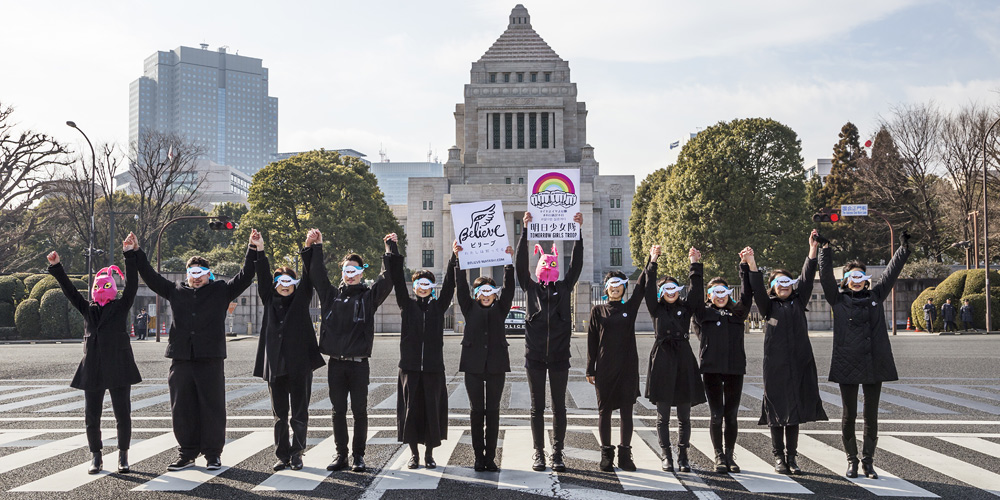
The Believe Campaign was launched to raise awareness of sexual violence in Japan and to demand modernization of the penal law, which has not been modified since its establishment in 1907. The Tomorrow Girls’ Troop contributed the design elements, targeted at women in their 20s, and staged the art performance Believe March to demonstrate the public’s demand for the amendments. Participants wore feather-shaped masks for anonymity, with messages from supporters. The march was filmed and premiered in Tokyo in 2017 in a group show on socially engaged art.
Follower
Lauren McCarthy (US)

Follower takes the language of social media at face value. But here, instead of providing followers online, the service provides a real life follower for a day and results in a single photo shot by the Follower. This work attempts to reconcile the willingness to engage with online followers, and to attract ever more of them, with a keen awareness of “ubiquitous camera placement, NSA monitoring, Google tracking, and any number of other [surveillance] practices.” By reversing the interface of app and user, Follower negotiates a new possibility to satisfy the intense desire to be seen and known.
http://lauren-mccarthy.com/follower
https://follower.today
Video: David Leonard, Lauren McCarthy
Design: Michelle Lin, Lauren McCarthy
Oh Dear Me (Documentation)
Knifeandfork (US)
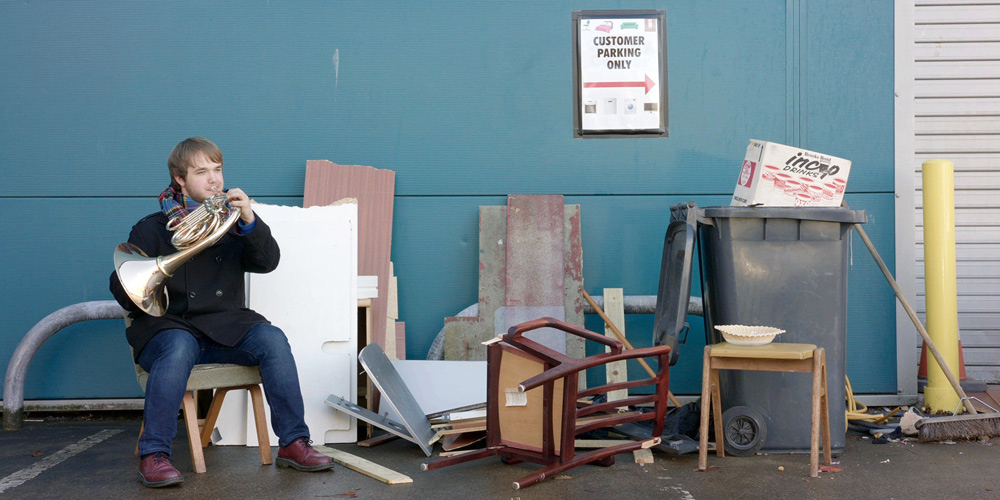
Knifeandfork (Sue Huang and Brian House) created Oh Dear Me as a commissioned work for NEoN (North East of North) in Scotland. In this performance, the public is invited to chat through a distributed hybrid digital/analog musical messaging system that activates the acoustic geography and industrial history of Dundee, Scotland.
A series of musicians are situated along a path winding through the historic jute mills of the Blackness area of Dundee. Visitors are invited to type a message into a computer console at either endpoint of the path, and their words are digitally encoded via fragments of The Jute Mill Song (Oh Dear Me), a folk song written around 1920 by Dundee mill worker and labor activist Mary Brooksbank.
Commissioning organization: NEoN (North East of North) Ltd.
Funding organization: Creative Scotland
Musicians: Red Note Ensemble (Ana Romero, Arin Grattidge, Colette Colman, Emily Stokes, Joey O’Neil, Jordan Robertson, Kenny Letham, Marcus Shanks, Rebecca Wilson, Scott Kerr)
Video Documentation: Bonnie Brae Productions
Special thanks to Donna Holford-Lovell, Dan Faichney, Ed Broughton, John Harris, Christine Cooper, Anna Murray
Vexation
Phoebe Hui (HK)
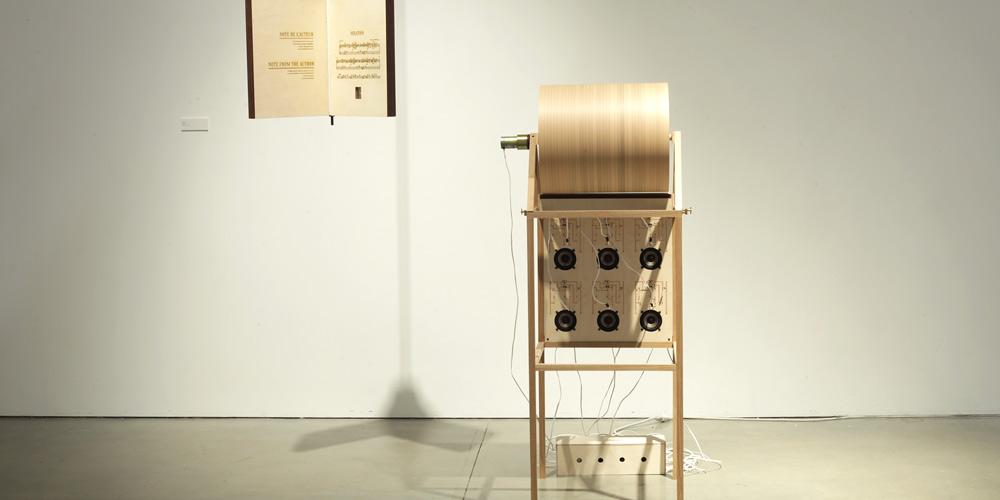
Vexation is a musical instrument built especially to play Erik Satie’s composition Vexation. Satie apparently instructed that the same music should be played 840 times. Inspired by Samuel Biderman’s octave spinet, Vexation builds upon traditional drawing pencils and woodwork together with modern electronics. I made a moving wooden cylinder on which I drew marks using pencils with different-sized leads. These pencil marks function as a score. The contact between the sound circuit and the pencil marks produces audible music. The cylinder can also be seen as a sculptural piece. Its cylindrical shape evokes my understanding of vexation—an endless circulation. In Vexation, I tried to collapse score and performance: The drawing in itself is the physical material that generates the tone. I am interested in transforming existing artworks, presenting them using new forms of notation or mechanical instruments, in order to raise the question: When does something become a different work of art?
Drones Sweet Drones
Anne Niemetz (DE/US)
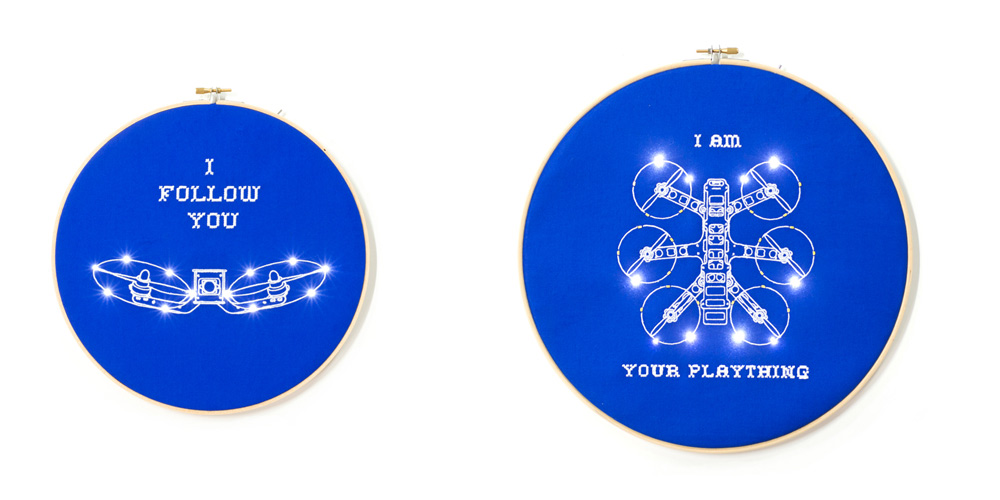
Home Sweet Home was an expression that was popular with troops on both sides of the American civil war, and through the glorification of drones the installation aims to open up discussion about the uses of drone technology. As embroidered blueprints using Arduino-powered lights, the aesthetic of the drones combines techniques associated with the past and the future, art and science, the amateur and the professional, and the feminine and the masculine. The blueprint text prompts us to further consider the potential of drones, as well as the gendered logics under which they operate. Drones Sweet Drones is purposely conspicuous rather than stealthy. Turning surveillance on its head, it wants us to study the fly on the wall that is becoming a greater part of our lives.
Installation: Anne Niemetz
Contextualization: Dr. Sarah Baker
Multicopter design: Hadley Boks-Wilson
Special thanks to Victoria University of Wellington
The Antmaster
Gil Kuno (US/JP)
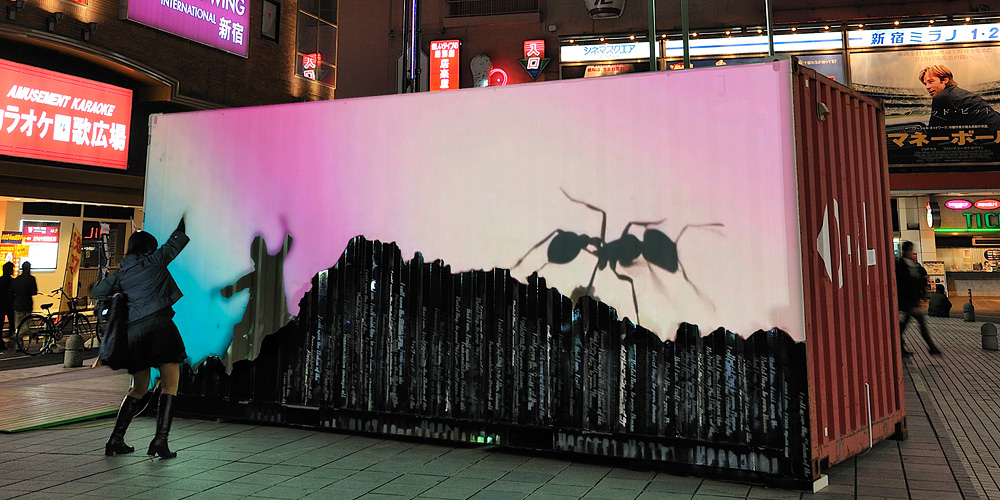
The Antmaster is an experiment in hybridizing dynamic media (projections) with static media (paintings.) Digitally projected images of live ants are superimposed onto painted surfaces to achieve a new amalgam of motion and still images. In addition, nanosounds of ants moving and communicating were recorded in a nano-science lab at UCLA CNSI to act as a soundtrack to the pieces.
The theme for The Antmaster is karma. In Hinduism and Buddhism, it is believed that past karma must be cleared through hard work and suffering in the present. Ants are viewed by humans as being very hard working. Might it be possible that the ants’ selfless diligence is the result of having to work off past karma? Invocations that are utilized to clear bad karma are inscribed into the static areas of the projection. In The Antmaster, Kuno tries to express how humans and other life forms (e.g. ants) are co-equal; they are all at the mercy of the same laws of the Universe (i.e. karma.).
Light Echoes
Aaron Koblin (US), Ben Tricklebank (US)
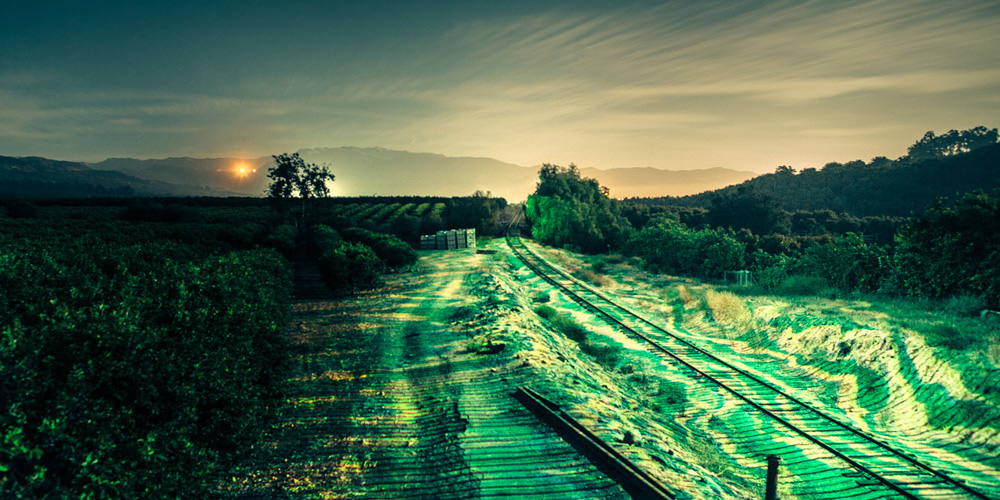
Traces of light are broadcast onto landscapes by a laser aboard a moving train. In Light Echoes, Aaron Koblin and Ben Tricklebank collapse time and space into images which document the historical pulses of data in the form of light reflecting off earth and matter. The project was included in Doug Aitken’s Station to Station project and later exhibited at the Barbican in London.
Fog Light
Doug Smarch (CA)
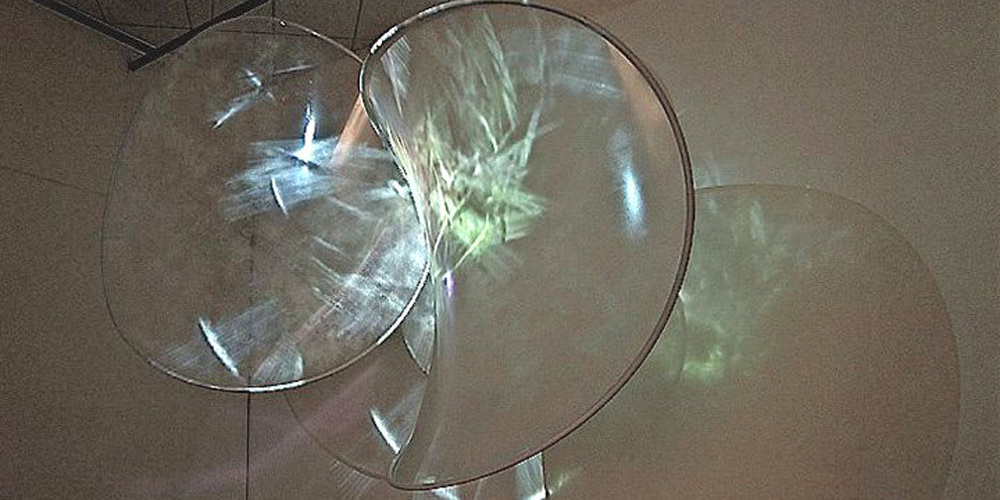
When someone sees a flock of birds circling in the sky, it can be a surreal moment that reflects the beauty of nature. Yet seagulls will flock together only when there is food; they will devour without any concern for what lies beneath. The duality of seeing a beautiful flock of birds and confronting the reality of birds’ unhindered instinct to attack forms the tension in this piece. Fog Lights ponders the relationship between beauty perceived by human beings and the cruelty of survival.
Xerodrome
Christopher O’Leary (US)
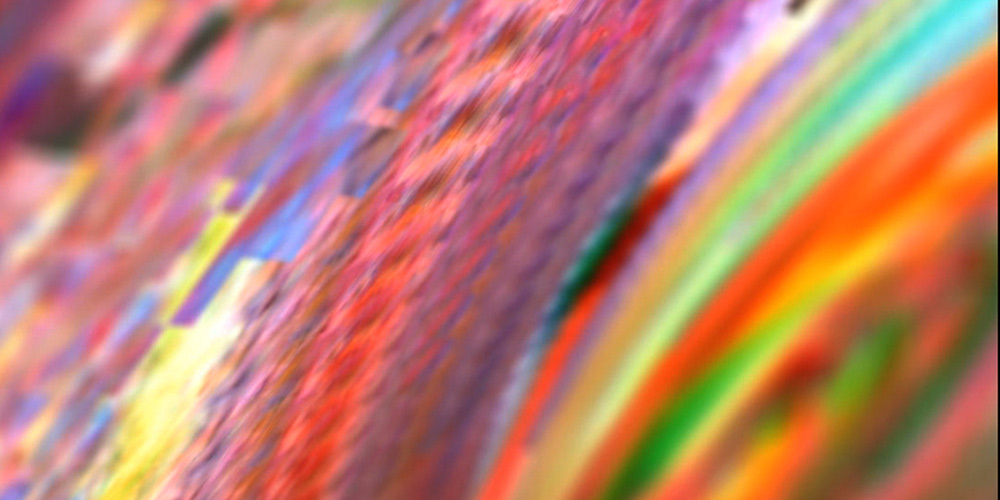
Xerodrome is an animation that explores a speculative landscape generated from glitched photographs. Throughout the 30-minute flyover, one can see landscapes of chaos and order, of natural materials and of digital noise. Amid vivid abstractions, shimmering pools, flaming cities and rivers of data seem to appear and disappear, rendered from the flat immateriality of the digital image. The accompanying audio by Isaac Schankler is a custom-digital performance for accordion.
Artist: Christopher O’Leary
Sound designer: Isaac Schankler
Compliant Gait
Sharmi Basu (US), John Brumley (US)
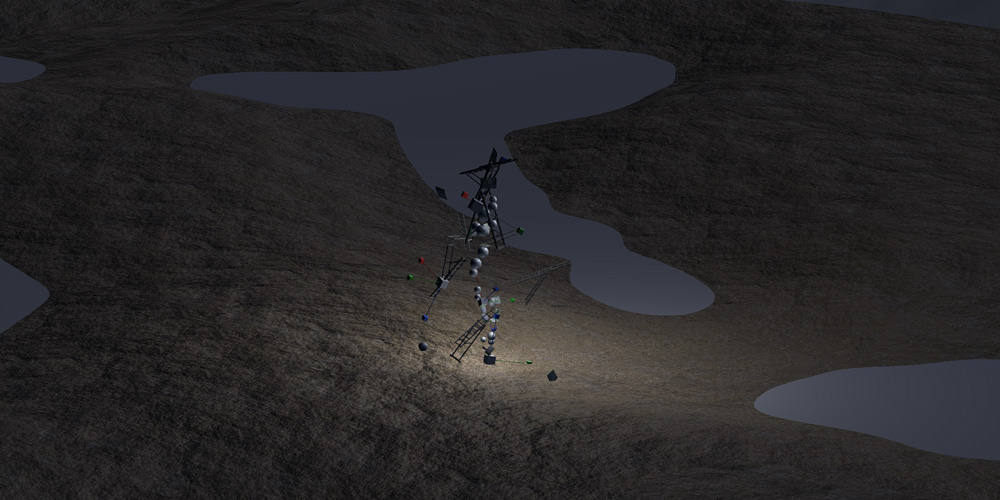
Digital bodies are constructed through the various gestures, data and objects we release into virtual space. Our own digital labors maintain such beings, and it is only through constant engagement with social media that the elusive memories of our own selves momentarily breach into the feeds of our followers and friends. As such, the corporate filters imposed by the apps that support and display our patchwork bodies partially imbue our digital selves with branding via watermarks, limited distribution, and licensing. In Compliant Gait, an invisible creature is given temporary form through the labor of an audience. After connecting to a local wireless network, audience members can use their mobile phones to instantiate digital objects within the hull of the creature. One by one, these objects fill the hollow shape of the creature’s body, revealing its form as it moves with a compliant gait across a barren landscape.
Prologue
Xin Xin (US/TW)
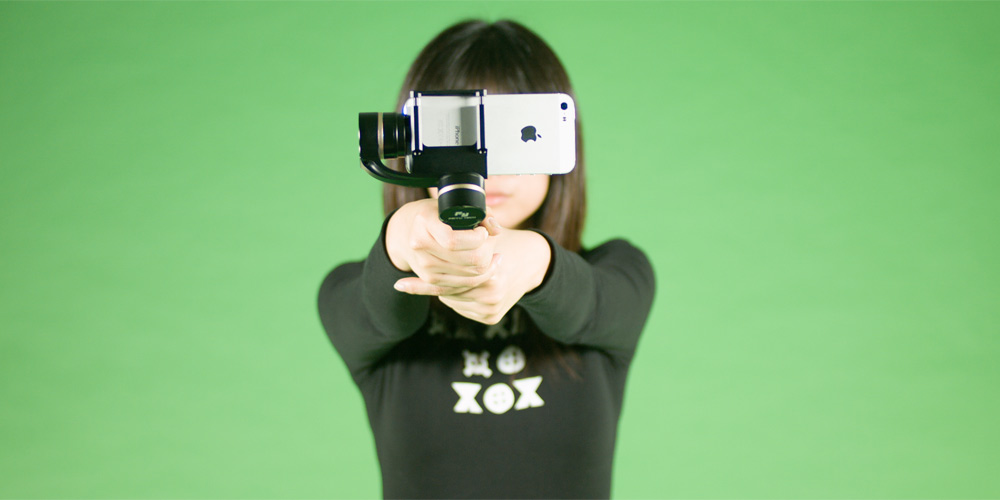
Prologue questions whether the decentralization of surveillance software tools created by governments, corporations and institutions to manipulate our relationship to politics can transgress the individual’s sense of responsibility toward the self and the other, and whether sovereignty can possibly be achieved without centralized protocols.
Cyborg Portrait
Noa Kaplan (US)

Why do the female cyborgs defy the pattern? Using the four mysterious characters from the US television series Westworld as a starting point, Kaplan began an obsessive process of deinterlacing their narratives—by capturing and recutting each character’s story arc so that she could watch each uninterrupted.
The first installment focuses on Dolores. Of the ten hours that make up the first season, three are devoted to Dolores, more than any other character. In order to identify behavioral patterns and thematic trends, Kaplan speeded up the aggregated footage, condensing it to ten minutes in length. Superimposed on this time-lapse are her findings, two times going at once. The result is a polyrhythmic pseudo-cyborg perspective, evolved from the gunslinger’s reductive computer vision used in the original 1973 feature film. These juxtapositions produce more explosive significance than what could possibly be articulated in words.
Dirt
Christina Agapakis (US), Ellie Harmon (US)

“Dirt is what you have behind your ears, soil is a living and breathing entity.” —Biologist Ann Hirsch, quoting a common soil-science aphorism
A single gram of rich soil can contain up to two billion bacterial cells and 18,000 unique genomes. Contemporary scientists are mapping this microbial wildernesses—from the Earth’s crust to the human body—transforming these “dirty” layers into new bio-info-technological resources for studying everything from climate change to human immune systems. At the same time, the microbial communities themselves are changing as a result of climate change, and we are left largely without a baseline from which to understand that change.
Through a digital and analog exploration of the microbial life in a set of soil samples collected along the Pacific Crest Trail, our project takes the form of a science-as-process-art collaboration. How can we make the life within the dirt visible? How can we make this “visioning” process itself visible?
Supported by The University of California Institute for Research in the Arts, UCLA Art|Science Center
Special thanks to Ann Hirsch, Kavita Philip, Victoria Vesna, Nick Seaver, Luke Olbrish, Beth Reddy, Maskit Maymon-Schiller, Mick Lorusso, Marissa Clifford, Dawn Faelnar, Otherworld, Kate Darling, Mike Bostock, Research and Testing Laboratory, and the US Postal Service
Meltings of the Heart Change Glacial Landscapes
Olivia Osborne (UK)

The ice domes represent both the environment in the form of glaciers and how defenseless they are to climate change. In addition, as a side-by-side comparison they also represent the vulnerability of “frozen” human hearts and the susceptibility to “melt.” The salt symbolizes the action of a xenobiotic tainting the environment and in the heart, a powerful evocative emotion that penetrates the organ, both through a chemical reaction. When this occurs, it leaves a tainted color that is forever encapsulated within the environment/heart and “trapped.” The water that surges in and out represents the people who flow in and out of our lives in the environment and our hearts. Only a few powerful people/chemicals have the capacity to make an impression or “love” in this landscape. Their touch upon the impressionable delicate emotions and susceptible landscapes remains there permanently, hybridizing one another, interconnecting. These actions, represented by hydrophobic colored dyes, “paint.”
Technical guest collaborator: Dan Wilkinson
TyndallLandscapes
Rita Blaik (US)
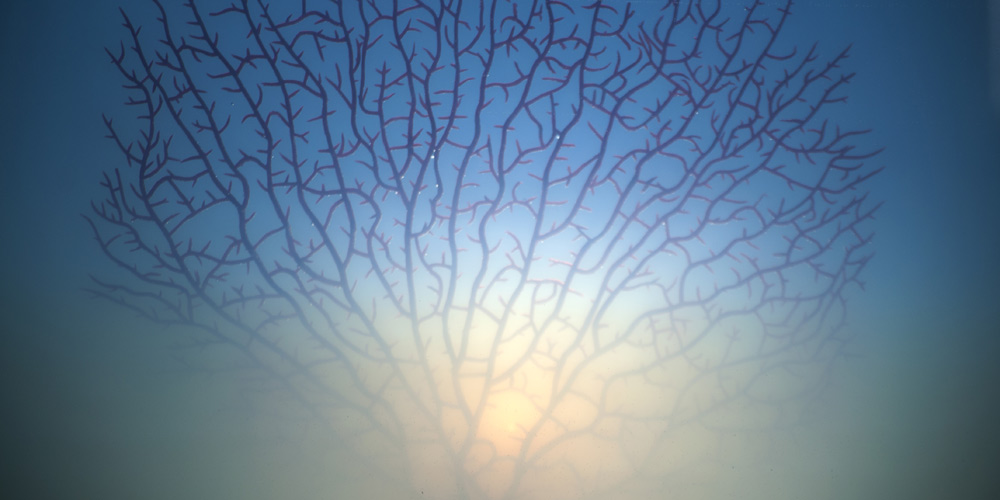
TyndallLandscapes is the creation of artificial skyscape sculptures utilizing nanoparticles as the primary means of scattering light. These sunsets invite the viewers to contemplate as one might contemplate an actual sunset. They are also presented with the concentration of the nanoparticles used to create the “sunset” and show the analogous, parts-per-million concentrations of highly polluted cities where particulate concentrations are so high as to cause serious health complications. The emergence of nanoparticles as a technology so promising for technological and societal advance also comes with negative effects on our health and the environment, which are difficult to study due to the size-specific effects and traits of nanomaterials.

